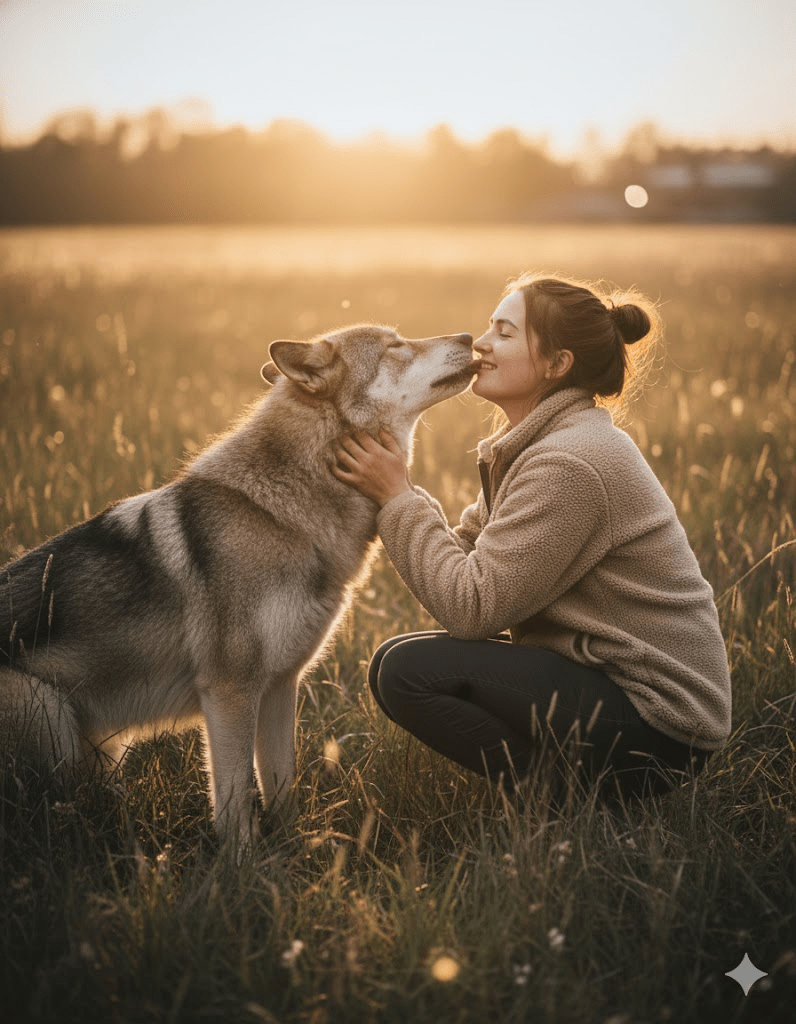The email arrived without fanfare, a sterile string of characters that belied the desperate plea it contained. “We have a wolfdog,” it began, “too much to handle. Aggressive. Untrainable. Euthanasia is the only option.” For Sarah, a rescuer known for her unwavering dedication to the most challenging cases, these words were a familiar, chilling refrain. But something in the accompanying photos – a pair of piercing, intelligent eyes peering from behind the cold steel of a cage – stirred a deep sense of unease. This wasn’t just another difficult dog; this was a creature of raw, untamed wilderness, trapped in a world it was never meant to inhabit. The sanctuary, already overflowing with rescues, was hesitant. The risks were immense, the resources stretched thin.
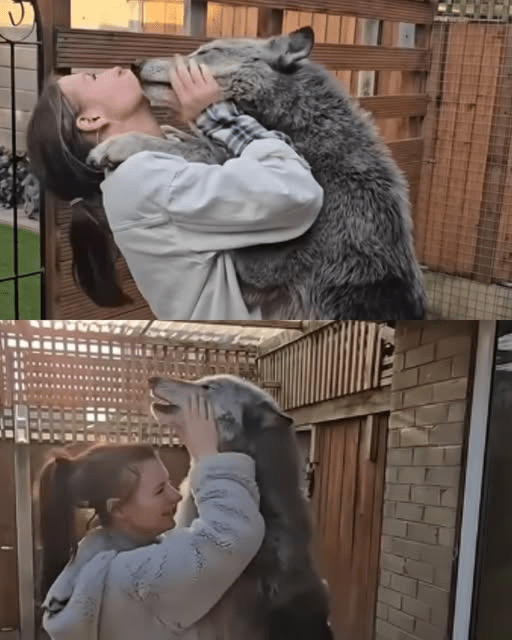
Yet, Sarah couldn’t shake the image of those eyes, a silent testament to a spirit fighting for survival. Against all odds, she made the call that would change everything, setting in motion a chain of events that would defy expectations and redefine the meaning of loyalty. The journey to bring this misunderstood animal, whom she later named “Fenris,” to safety was fraught with challenges, each mile a testament to the chasm between human and wild. From the moment of his hesitant arrival, a whirlwind of doubt and determination began, promising a story far more complex and profound than any mere rescue.
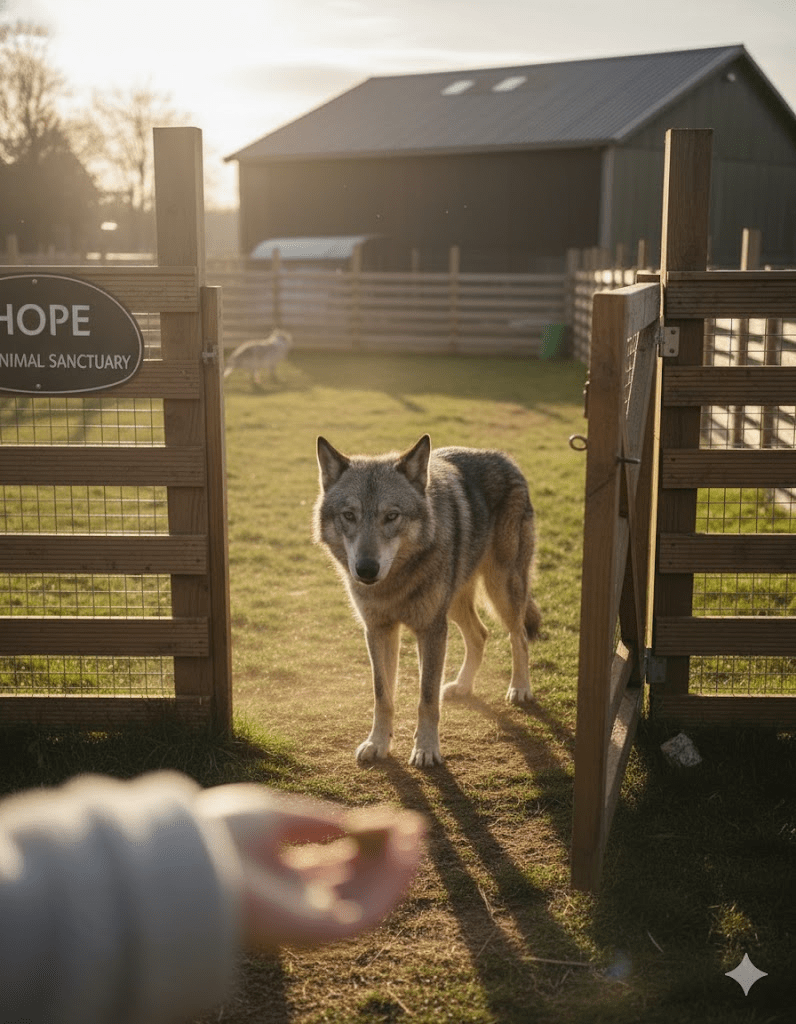
Fenris’s arrival at the sanctuary was less a grand entrance and more a wary negotiation. He emerged from his transport crate a magnificent, imposing figure, but every muscle was coiled with tension. The other dogs, used to welcoming newcomers, kept their distance, sensing the deep-seated mistrust radiating from him. He moved with the quiet stealth of a predator, his eyes constantly scanning, assessing, never truly resting. For weeks, he kept to the furthest reaches of his enclosure, a silent, grey shadow. Food was snatched quickly, never eaten in front of human eyes. Attempts at gentle interaction were met with a low growl or a sharp snap of teeth, clear declarations of his desire for isolation. Sarah, however, remained undeterred. She spent hours simply sitting near his enclosure, speaking softly, never pushing, never demanding. She understood that trust, for a creature like Fenris, was not given; it was painstakingly earned, a fragile bridge built brick by patient brick.
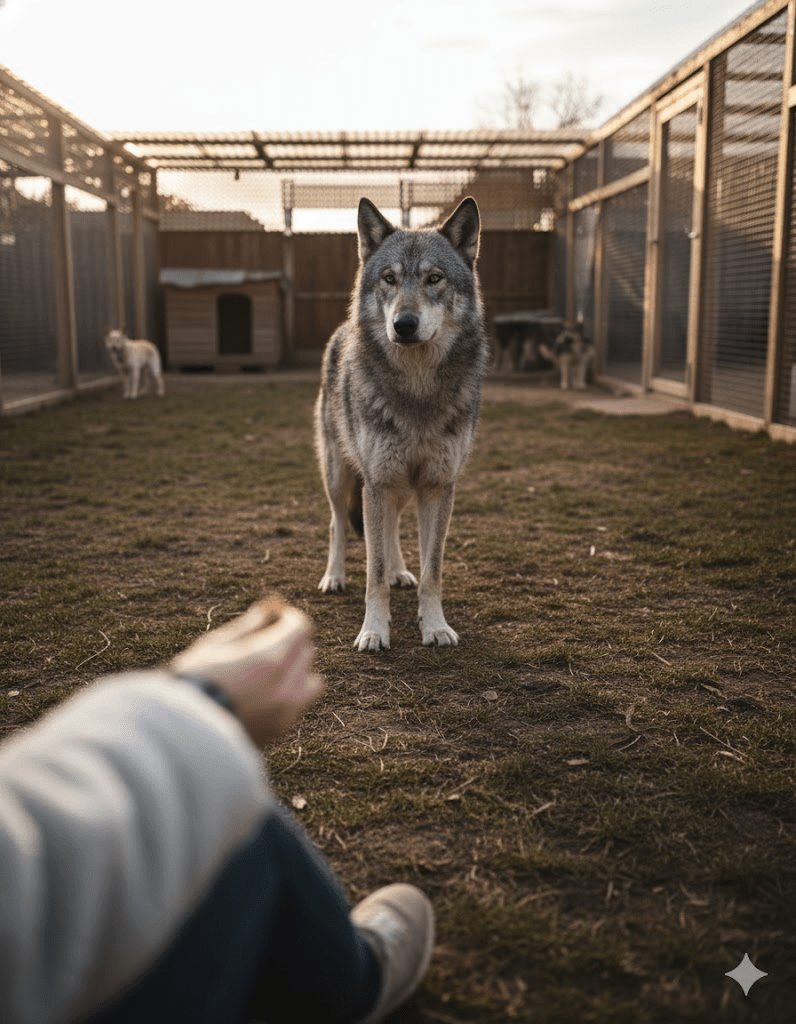
The first breakthrough came unexpectedly, during a particularly fierce thunderstorm. The other animals whined and cowered, but Fenris, despite his wild nature, displayed an unusual sensitivity to the booming thunderclaps. He paced frantically, whimpering softly, a vulnerability Sarah had not yet witnessed. Instinctively, she moved closer to his kennel, speaking in a calm, soothing voice. She placed her hand, flat and open, on the wire mesh. To her astonishment, Fenris, instead of retreating, cautiously approached. He sniffed her hand, a tremor running through his large frame. Then, with a soft whimper, he pressed his nose into her palm, a tentative connection forged in shared anxiety. It was a fleeting moment, but it was a crack in his formidable armor, a glimpse of the softer soul beneath the wild exterior.
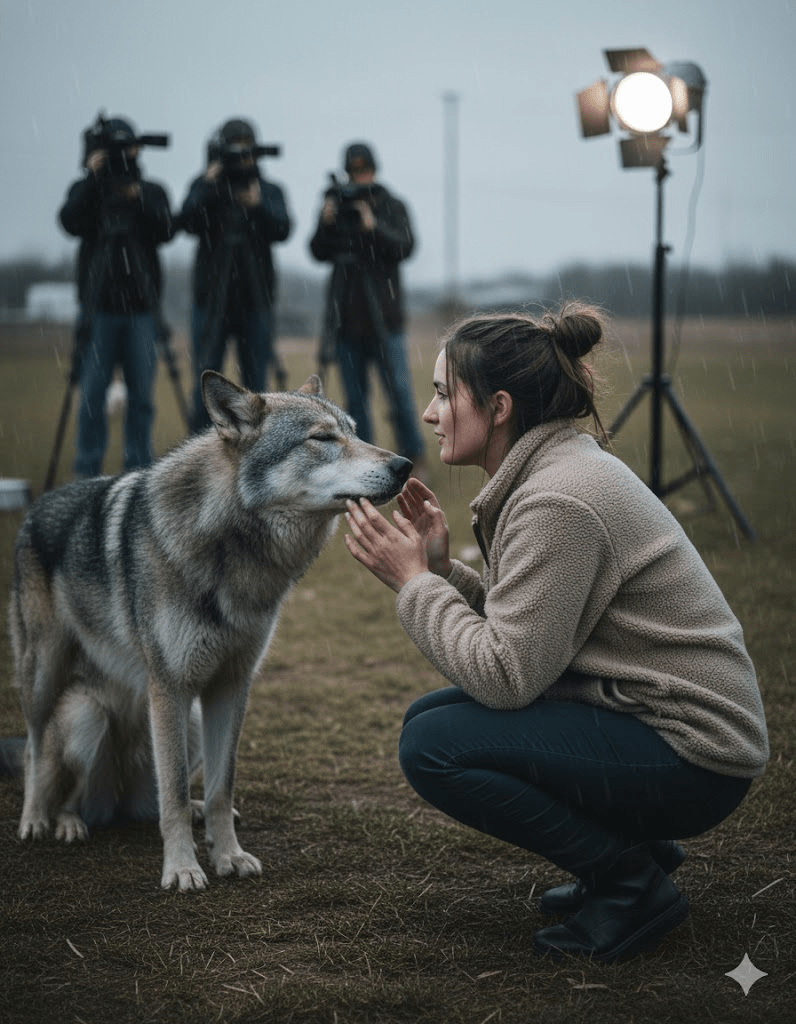
The story of Fenris, the “unadoptable” wolfdog, and Sarah, his relentless advocate, began to spread. Local news outlets picked up on the unique bond, drawn by the raw emotion and undeniable progress. Cameras flashed, reporters scribbled furiously, and the sanctuary saw an unprecedented surge in donations and volunteer applications. Yet, the increased attention brought its own challenges. Some viewed Fenris as a spectacle, a wild animal tamed, rather than a sentient being finding his way. Whispers of his dangerous past resurfaced, amplified by sensationalist headlines. Sarah found herself constantly battling misconceptions, defending Fenris’s gentle nature against a world eager to label him a threat. She knew that true acceptance wouldn’t come from fleeting fame, but from consistent, unwavering love and understanding.
